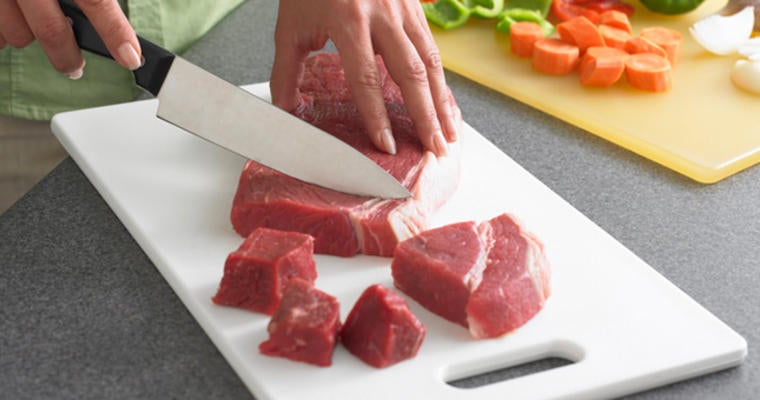The federal government estimates that there are close to 4 million cases of foodborne illnesses in Canada every year. Many of these cases can be prevented by properly handling foods. As a Dietitian, I see too many food service employees place their clients at risk of food-borne disease due to inappropriate handling of food. During a busy work day, errors can happen. Those errors can however be quite costly for the business in terms of credibility and customer loyalty. Food handlers and facility managers should constantly avoid risks of cross-contamination. Of all risks that can affect food safety, this one is likely the most common.
What is cross-contamination?
Cross-contamination occurs when bacteria is transferred from raw foods to RTE or cooked products. It can occur with:
• Food items (raw chicken, macaroni salad, nuts beside a cake)
• Food handler (dirty hands, coughing, sneezing, hair)
• Improperly cleaned utensils or work surface
The 10 most common hazardous manipulations:
- Cutting raw meat on a cutting board, wiping it without washing it, then placing cooked meat on it.
- Placing cooked meat on the same plate as raw meat was on previously.
- Using same cutting knife for raw and cooked food.
- Storing raw food above cooked food.
- Placing ingredients on a non-sanitised work surface.
- Getting some help from someone outside of the food preparation area without that person having washed hands or changed clothes.
- Placing cases of food or containers on the floor.
- Tasting using fingers.
- Eating or drinking over a work surface.
- Scratching or sneezing while cooking.
The best 10 food handling practices:
- Washing hands before and after handling food.
- Not using the same surfaces, boards and utensils for raw and cooked food.
- Preparing cooked food separately from raw food, especially meat and fish.
- Covering food for storage with approved plastic film or washable lids.
- Placing cooked and RTE food in the fridge, above raw items.
- Not placing containers on counters or work surfaces once they have been on the floor.
- Prewashing, washing and sanitizing all equipment and work surfaces after handling raw food.
- Careful handling of allergy related foods, such as peanuts, nuts, sesame seeds, fish and shellfish, eggs, milk, soy and food containing sulphites.
- Tasting food using different spoons or disposable utensils.
- Avoid scratching, sneezing, coughing, touching your face while preparing food.
Although this is not the most trendy topic in the nutrition world, your clientele will always benefit from best practices for handling food. This will enhance the quality of meals served and ensure a better conservation of perishable food. By enforcing good practices at all times, the facility manager ensures food safety.

























